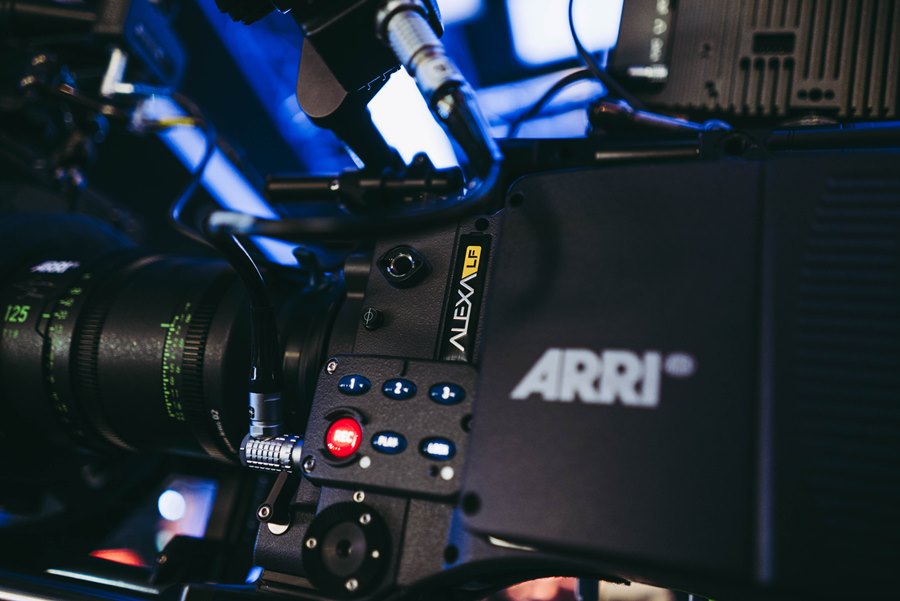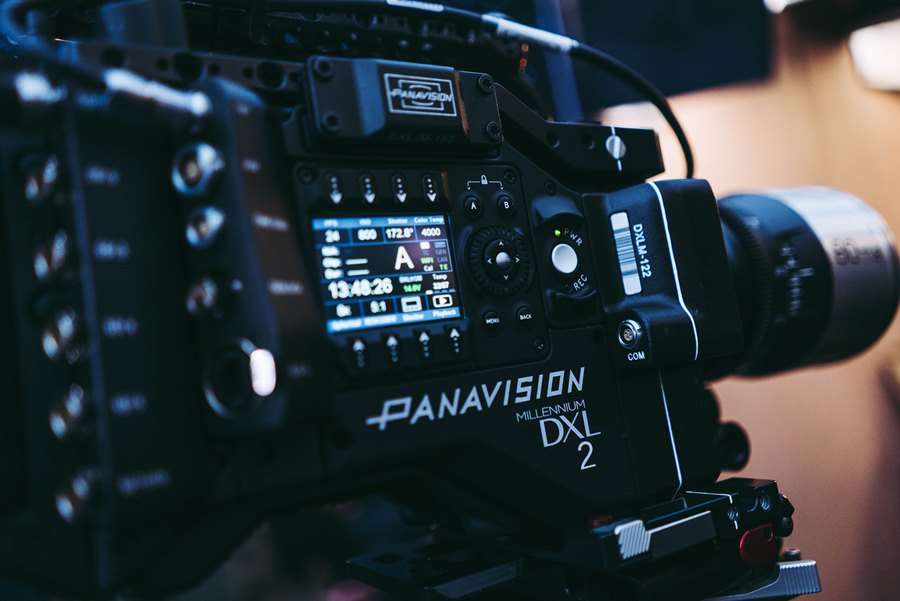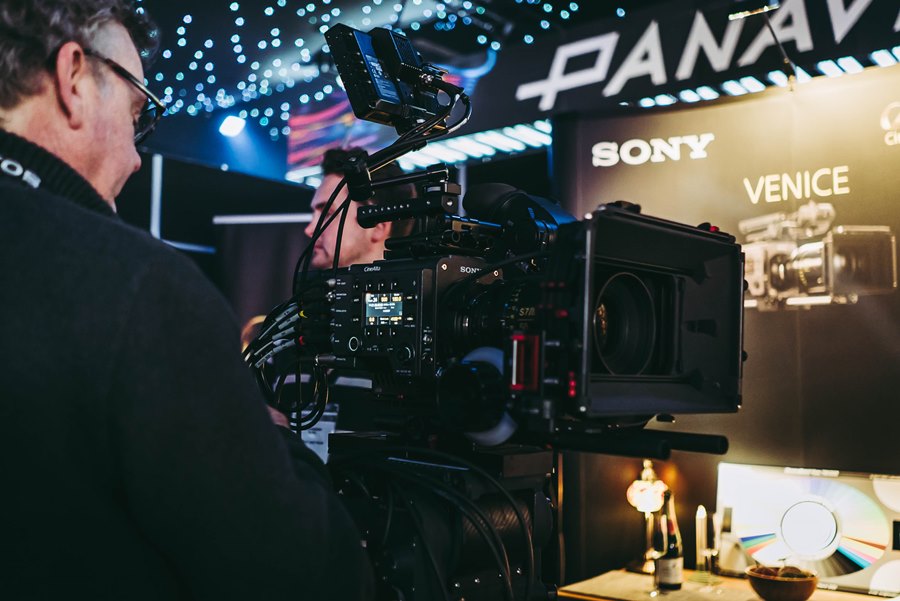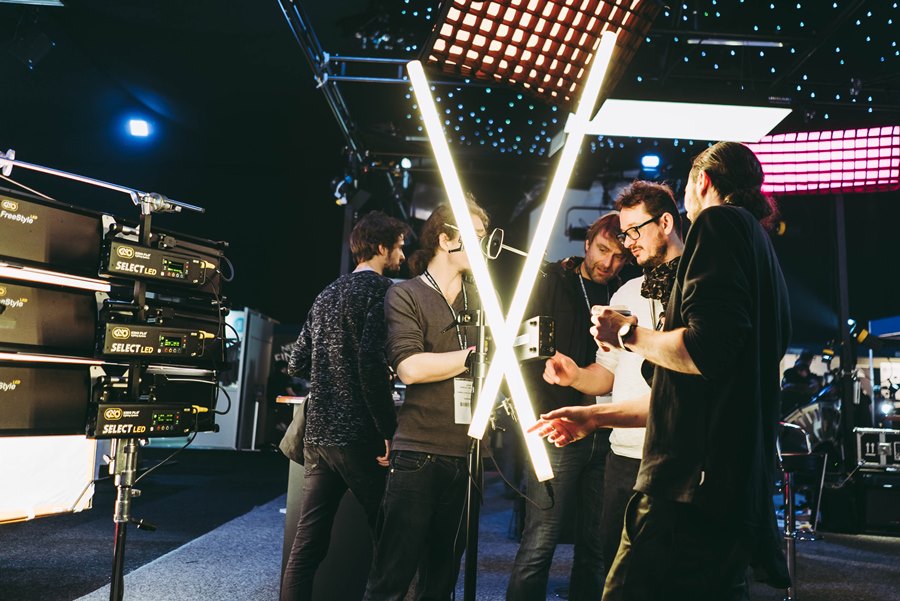Once again the large sensor cinema cameras take the spotlight. Here are four products that really caught our eye

Arri Alexa LF
The biggest announcement at this year’s BSC Expo was a new 4K version of the popular ARRI ALEXA, the ALEXA LF. Previous ALEXA models have comprised of 2.7K sensors. The only model to exceed the LF’s resolution is the ALEXA 65, capable of capturing 6K, thanks to its trio of 2.7K sensors.
But just hiring the ALEXA 65 can prove costly — it’s regularly used for Hollywood blockbusters after all… And with content distributors such as Netflix, only permitting true 4K content, ARRI needed to offer a more cost-effective 4K capable solution to compete with the likes of RED, Panasonic and Sony, and that’s the ALEXA LF.
Interestingly, the ALEXA LF’s sensor isn’t new. It’s the same ALEV III sensor found in the original ALEXA SXT W from 2010. So, how does it achieve true 4K capture? Via the use of two ALEV III sensors arranged vertically, side-by-side; very similar to the ALEXA 65, which contains three.
The ALEXA LF’s body is slightly bigger than the ALEXA SXT W, with an additional 12mm in both width and length. This is an impressive feat, considering the presence of an extra sensor. The lens mount has also received a refresh and now consists of what ARRI is calling an LPL mount; larger than the traditional PL mount, but with a much shorter flange focal distance. An LPL to PL adapter will be included with the ALEXA LF, but due to the shorter flange distance, Super 35mm lenses won’t cover the sensor fully — we expect to see new Signature lenses, suited to the LF, in the future.

Panavision DXL2
You might think that Panavision’s DXL2 is designed to compete directly with the RED Helium, they’re both 8K capable cameras after all. But the DXL2 is actually the product of a collaboration between the two companies, designed to go toe-to-toe with the mighty ALEXA 65.
The DXL2’s sensor is big, to say the least. It’s a 16-bit 35.5MP CMOS sensor, with a maximum resolution of 8192x4320 and is capable of resolving up to 15 stops of dynamic range. You can record in glorious 8K RAW at up to 60fps, while simultaneously recording a 4K proxy to make life easier during post-production. But let’s be honest, when you’re shooting on a camera of this calibre, you’re not exactly going to be editing on your MacBook Pro…
When it comes to rental, Panavision are one of the most well-known brands in the world. You’ll find their products operating in all corners of the globe and on all types of productions. The company has mainly focused on lens production in recent years, so the announcement of a new camera — especially one produced alongside RED — might shake up the ARRI camp. But until we get to witness this camera out in the field, we’ve no way of telling how it’s going to shape up against ARRI’s ALEXA 65.

Sony Venice
We’ve known about the flagship 6K full-frame cinema camera for a while, but Sony has made some last-minute changes to the Venice before it ships. The camera will feature a Dual Native ISO of 500 and 2500. Exactly how this will work on the Venice remains to be seen but, typically, Dual Native ISO technology requires two separate analogue circuits to sit behind the sensor for both low and high bases.
This seems like a rather big change, given the camera was originally due to ship in February 2018. But if Sony can pull this off, users are sure to benefit from the higher base ISO of 2500, especially when you consider that the other base ISO of 500 (previously the only base ISO option) is slightly lower than the competition.
The Venice will also feature an 8-step optical ND filter servo system. At this level, you’d expect filmmakers to have access to dedicated filter sets — it’s not something you’d expect to find on a high-end cine camera —only time will tell how useful this addition will prove. Either way, it’s better to have the option than not.

Kino Flo Prototype lighting
Kino Flo’s prototype LED tube lights are the only products to make our list that aren’t cameras. The fixtures resemble Quasar’s increasingly popular LED lights, but for the moment, information is thin on the ground.
But what we do know is that these new fixtures connect seamlessly to the same power/control unit to that of Kino Flo’s FreeStyle system.
So, if you’ve already invested in the ecosystem, these lights will prove an attractive addition. The menu system works exactly the same whether you’re using the tube lights or a traditional panel light. You can power up to four of these LED lighting tubes via the one power unit, while experiencing the flexibility, control and quality of light you’d expect from Kino Flo’s current LED range.
These lights could even provide a means in which to upgrade your old gear to the age of LED as they’re designed to fit the fluorescent housings from older Kino Flo lights. Exact specifications will have to wait until we receive more information, but for now, the prototypes certainly look exciting.
About the Author
Kristian Hampton is a Wex Photo Video’s former Technical Editor for Pro Video. He is a video specialist who has worked in corporate studios for companies such as Vodafone Group and PwC, as well as working as a freelance grip on various TV productions and features. He also runs Krade Media, providing enterprises with production services. Follow Kristian on Twitter @KrissHampton
Related articles
DJI Mavic Air Announced
CES 2018 — The Most Exciting Announcements
Perspective: Camera Names Are Ridiculously Confusing
